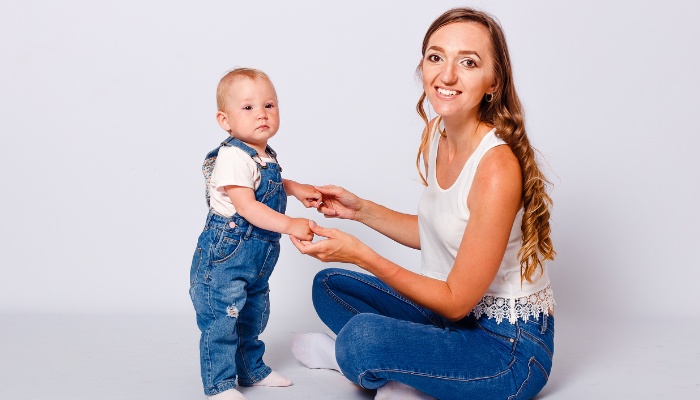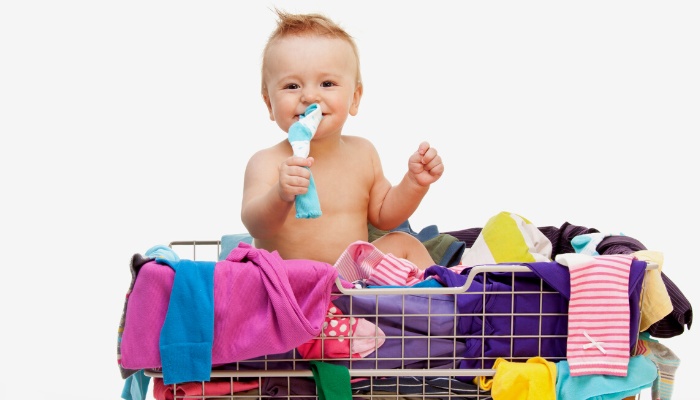The sizing of baby and toddler clothing can be difficult to understand. How does 3 Months compare to 0-3 Months? And what about 24 Months and 2T?
There are many different ways stores and brands choose to size their clothes, but as you read through the following, you will get a better understanding of what these sizes mean and how to best shop for your little ones!
How do toddler sizes work? Toddler sizes are for children 1 to 5 years old. The sizes usually have a number and a letter, such as T for toddler. While the number usually corresponds with the age of your child, the actual sizing is based on height and weight since all children grow at different rates and speeds.
Toddler and baby clothing sizing is based on height and weight. The sizing may be displayed differently, but there are a few tips and tricks for how to find the best fit for your baby or toddler.
Toddler Clothing Sizes
Toddler clothing sizes are fairly easy because they typically correspond with your toddler’s age; however, all kids grow at different rates!
For example, my little girl is 3, but oftentimes, a 2T still fits her! If the age doesn’t exactly correspond with the size, you can go by the height and weight of your child and follow the chart below.
How Toddler Sizes Differ From Baby Sizes
Toddler clothing starts at 2T and goes up to 5T. Toddler sizing is different from baby sizing.
With baby sizing, the size usually means up to a certain age. For example, 0-3 Months typically means the clothing will fit the baby until they are 3 months old.
Toddler clothing, however, is different. Toddler clothing typically fits the toddler for the whole year that the size states.
For example, the average 2-year-old will usually be able to wear 2T from their second birthday until they turn 3.
Baby Clothes Size Chart
| Clothing Size | Height (inches) | Weight (pounds) |
| Preemie | Up to 17 | Up to 5 |
| Newborn | Up to 21.5 | 5-8 |
| 0-3 Months | 21.5-24 | 8-12.5 |
| 3-6 Months | 24-26.5 | 12.5-16.5 |
| 6-9 Months | 26.5-28.5 | 16.5-20.5 |
| 9-12 Months | 28.5-30.5 | 20.5-24.5 |
Toddler Size Chart
| Clothing Size | Height (inches) | Weight (pounds) |
| 12 Months | 28.5-30.5 | 20.5-24.5 |
| 18 Months | 30.5-32.5 | 24.5-27.5 |
| 24 Months | 32.5-34 | 24.5-30 |
| 2T | 33-35 | 26-31 |
| 3T | 35-38 | 30-35 |
| 4T | 38-41 | 35-39 |
| 5T | 41-44 | 39-44 |
24 Months vs. 2T
What is the difference between 24 Months and 2T? Aren’t they the same age? So why are there two different sizes? This can be quite confusing.
Clothing marked 24 Months should fit babies up to the age of 24 months. Clothing labeled 2T typically fits a 2-year-old from the time they turn 2 until age 3.
Items marked 24 Months will normally fit a short, stocky 2-year-old while 2T will usually fit a tall, thin two-year-old.
Also, bottoms labeled 24 Months are usually roomier in the seat to accommodate bulky diapers while pants sized 2T usually have a slim fit.
Be Aware That Different Brands Fit Differently
To add to the confusion of baby and toddler sizing, brands often fit differently! A 2T from Target may fit much smaller than Carters or OshKosh, or vice versa.
I have found that at Target, the brand “Cat & Jack” runs smaller than their other brands, so I usually size up!
Be aware that almost all brands will run a little differently, but they should typically follow the sizing charts, so using your child’s height and weight can be the most helpful in picking out sizes.

Your Toddler May Be Bigger or Smaller Than Average
Children all grow at different sizes! Your 18-month-old baby may grow faster than average and already be wearing a 2T! Or you may have a 4-year-old who is still wearing a 3T.
Some clothing marked 18 Months still fit my 2-year-old, and it is all based on the rate my children grow and the different sizing of different brands.
The most important thing to remember is to not stress about what size your child is wearing based on their age.
Some babies never even wear newborn clothing. If your baby is in much larger or smaller sizing based on their age, this is normal and common.
Remember that each baby is an individual and grows differently. If you have any concerns about your child’s growth, remember to speak to your pediatrician.
How To Measure a Toddler for Clothes
- Use flexible measuring tape because it is the easiest and most accurate way to measure your toddler for clothes.
- Measure your child’s height by having your toddler stand against a wall with bare feet and their back straight. Measure their height from the top of their head to the floor using the measuring tape.
- Get your toddler’s weight.
- Use your toddler’s weight, height, and a sizing chart (see above) to help you decide which size to buy for your sweet kiddo!
Toddler Sizes vs. Kid Sizes
Toddler sizing and kid sizing are also slightly different. When you cross that aisle from the toddler section to the kid section, what do these new sizes mean?
Actually, kids’ sizes and toddler sizes overlap! An XS is typically a size 4T-5T. A small will then typically be a 5 or a 6.
Sizes 4 and 5 in kids’ clothes are typically slightly larger than the toddler sizing. They may be between 1 and 2 inches longer in pants and accommodate a little more weight.
Follow the chart below to help you with your sizing.
Kids Clothing Size Chart
| Clothing Size | Height (inches) | Weight (pounds) |
| 4 | 39-41 | 32-37 |
| 5 | 42-44 | 37-42 |
| 6 | 44-47 | 42-48 |
| 6X | 47-48 | 48-54 |
Related Questions:
What Size Does a 2-Year-Old Wear?
The sizing for a 2-year-old can vary depending on their height, weight, and build. A 2-year-old might wear 24 Months, 2T, or 3T.
Keep in mind that every child is different and that different sizes may be better depending on their build and proportions. Measure your toddler, and check the brand’s sizing before buying.
Is Size 5 the Same as 5T?
The sizes are different. Size 5T is typically for 5-year-olds who are still transitioning from the toddler sizing and is slightly shorter in length than kid size 5.
Pants marked 5T are usually roomier to accommodate the possibility of diapers or pull-ups.
You may notice fewer buttons and zippers on 5T clothing compared to size 5, and the cut on size 5 is leaner than 5T due to the tendency of 5-year-olds to be in the process of losing their baby fat.
Size 5 and XS typically run about the same, but be aware that all brands run differently.
Closing Thoughts
Baby and toddler sizing can be confusing, and to add to the confusion, clothing from different stores and brands can fit differently.
However, you can use the charts in this post to help you with measurements, weights, and sizes!
Once you find the size that fits your child, it will typically be the same across the board; however, some brands will fit differently!
Some sizes overlap, and some overlapping sizes are targeted for toddlers rather than for kids or more for babies rather than toddlers.
Have fun shopping, and keep your receipts!
Mom of three (including identical twin boys), wife, and owner of Parents Wonder. This is my place to share my journey as a mother and the helpful insights I learn along the way.

